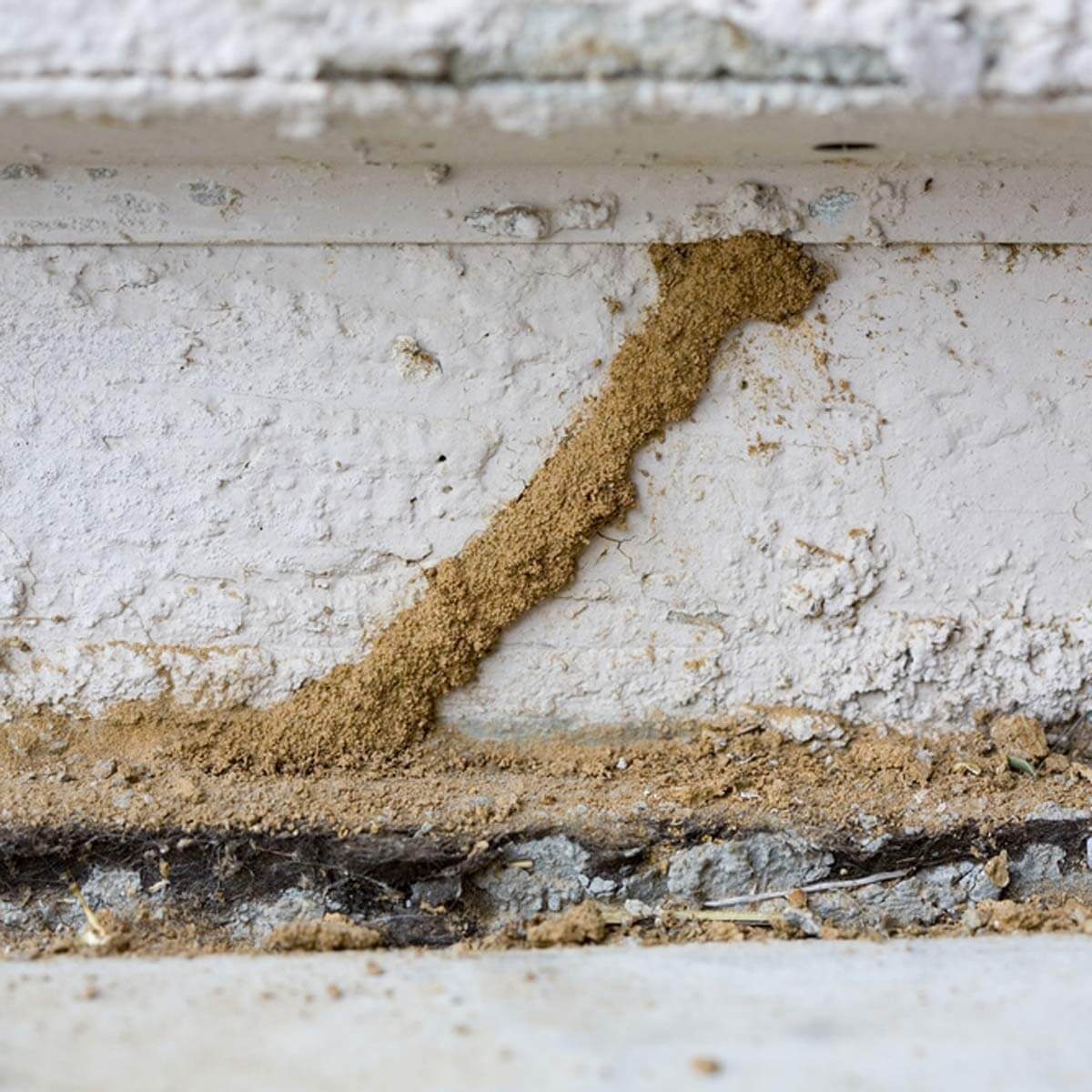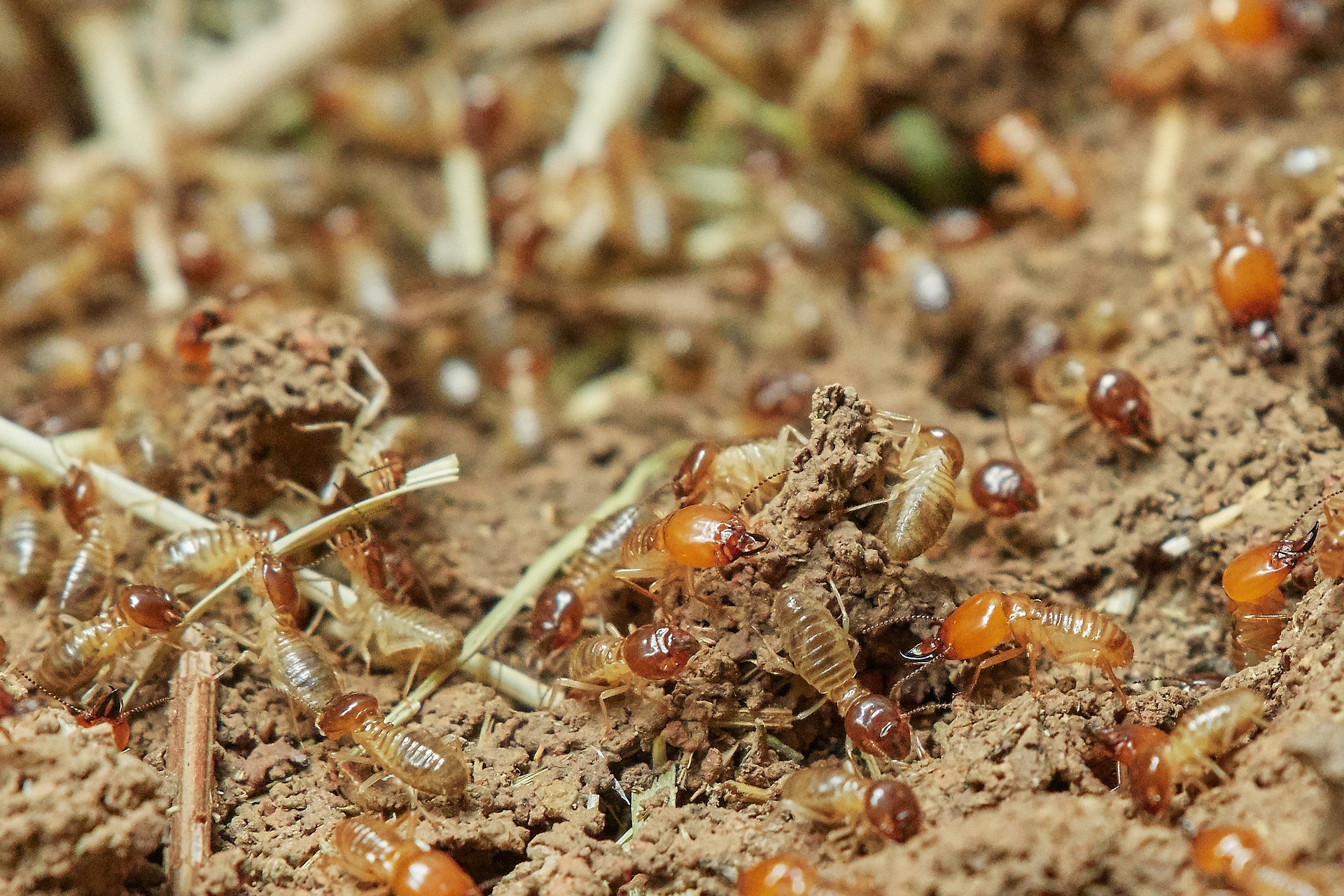Table Of Content
- Termite Inspection Cost
- STEP 7: Hire a professional if you need help or if the infestation is too large to handle with DIY methods.
- How Much Does Sagging Floor Repair Cost?
- Termites Vs. Ants: 8 Ways to Tell Them Apart
- The United States of Termites: How the Tiny, Traveling Pests Are Taking Over—And Where They’re Going Next
- National Pesticide Information Center (NPIC)
- When to Call a Professional

Termites are one of the most difficult pests to identify and remove. A professional’s tools, training, and experience are almost always required to remove termites once they’ve established themselves inside a structure. The two primary types of termites that infest American homes are subterranean termites and drywood termites. There are also dampwood termites, though they typically only infest damp, rotting trees, and logs. It’s important to identify which type you are dealing with because they may require different treatment methods. While you can create poisonous barriers against subterranean termites, you’ll need to spot-treat or get fumigation services for drywood termites.
‘A world first’: Devon calls victory in 27-year war on termites - The Guardian
‘A world first’: Devon calls victory in 27-year war on termites.
Posted: Tue, 21 Dec 2021 08:00:00 GMT [source]
Termite Inspection Cost

Because termites work in secret for a long time, it might be difficult to confirm their presence. There are several reasons why you might suddenly notice a colony of termites invading your home. The good news is that it’s nothing you did, but is mostly environmental factors that have to be just right to attract these critters to your home. Yes, provided you don’t have an infestation that has affected your entire home. If you know for sure that your infestation is localized to one part of your home, it is possible to concentrate your extermination attempts on that one area.
STEP 7: Hire a professional if you need help or if the infestation is too large to handle with DIY methods.
Nationwide, termites inflict more than $2.5 billion worth of damage on homes each year. The second option for treating termites when working with an exterminator is bait. The termite that finds the wood eats it, then takes the food back to its colony for the rest to feed on. There’s no one-size-fits-all when it comes to pinpointing termites in the home. Instead, there are several dead giveaways that your home is dealing with a colony or two.
How Much Does Sagging Floor Repair Cost?
When termites perceive a threat, they bang their heads against wood to make a “click” sound. A gentle but persistent chorus of clicks during quiet moments in the household may mean termites are in the walls. To fuel their busy lives, termites get energy from cellulose, a carbohydrate found in all plants and wood. Termites cut into wood with pincer-like extensions near their mouths and break it down into material for building and nutrition. The movement of a single termite isn’t noticeable, but with hundreds of thousands of termites in a colony, small sounds add up. We back up our pest control recommendations with a detailed rating methodology that we use to objectively score each provider.
We also discuss more about termite tenting, average costs, risks to know about, frequently asked questions, and more. First, let’s look at the difference between termite tenting and fumigation. Termite tenting is a pest control treatment process that can get rid of an infestation by pumping poison gas (fumigant) into a home that is covered by a large tent.
You and your family and pets will have no access to your home for approximately 72 hours. In addition, the fumigator will need access to any space large enough to possibly hold a person. This is to perform a safety check before the fumigation and to verify all fumigant is gone after the fumigation. Locked rooms, armoires, and safes can cause a postponement of the fumigation. Making other sleeping and eating arrangements can be extremely inconvenient for many people and can significantly add to the cost of the fumigation. When possible, many people choose to fumigate when they are planning on being away on vacation.
The tent keeps the poison gas inside the home, and it helps it penetrate deep into every part of the home, even the wood timbers. Sophie Kaemmerlé is the executive editor of Performance (formerly Special Projects) at BobVila.com. She has led the team since August 2020, bringing 7 years of content creation, content strategy, and project management in e-commerce, lead generation content, news, and more to BobVila.com. The 2024 termite season, which began in late February into March in some places, is showing signs of a shift from previous years. In the United States, that means they are the most prevalent in the South—states like Florida, Texas, Alabama, and Georgia.
You can choose to have your entire home heat treated, or just the area of known drywood termite activity. The skill of the technician is directly related to the success of this type of treatment. If the interior of the wood does not get hot enough, termites will not die. In addition, if you choose heat as a spot treatment, other drywood colonies, that were unknown to you, will continue to flourish.
When to Call a Professional
Termite baits are strategically placed around your yard to lure termites in. Once there, the termites are covered with a slow-acting insecticide or insect growth regulator. By removing some of the things that attract termites, you'll stand a better chance of controlling them. Many termiticides are highly toxic, making it critical to follow label directions with added care.
For monitoring, Orkin creates a Continuous Termite Inspection Plan and Re-treatment Program to ensure that if termites return, Orkin will return to combat them at no extra cost. Some methods can be applied directly to infested areas no matter what type of termites you have. Termite baits, installed around the perimeter of your home’s foundation, attract foraging termites to a slow-acting poison. One popular type of termiticide bait interrupts termites’ natural growth, killing them as they try to molt.
Pest management professionals have the knowledge, expertise, and equipment as required by the label, which minimizes risks and maximizes effectiveness. Works like radar to detect termites moving through wood and under drywall or tile. When used in combination with a heater, can also make termite galleries visible. Pinpoints areas with high moisture levels — 15 percent or above — which are more likely to harbor some types of termites.
They’ll want to examine sagging floors, holes in woodwork, and any hollow parts in the home’s foundation. If the wood falls apart easily, this could be a sign of a termite problem. For drywood termites, drill a hole in the infested piece of wood, fill it with termiticide, then putty over the holes. If you see swarms of termites in particular emerging from your home, get a pro asap. A termite infestation can lead to costly damage to your home’s interior and overall structure. Termites cause an estimated $5 million in damage to homes in the United States every year, and homeowners insurance does not cover termite damage.
A great alternative to fumigating, the professionals will tent your house and heat it until the structural wood registers a temperature of 120 degrees Fahrenheit. This heat treatment ranges from $1 to $2.50 per square foot or $10 per linear foot. We’ll take a look at average termite treatment costs, different ways your pest control expert might go about eradicating any termites you have, as well as how to keep them away for good. Remember, prevention is key to avoiding termite infestations, so regular maintenance and vigilance are important for keeping your home termite-free. In general, you should bring in a professional for a full house inspection and assessment once you find wood damage. This is especially important since termite damage and wood rot can coexist and because it is extremely easy for termites to go undetected.

No comments:
Post a Comment